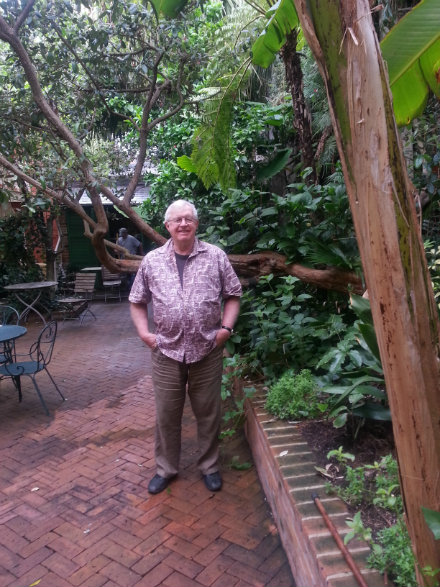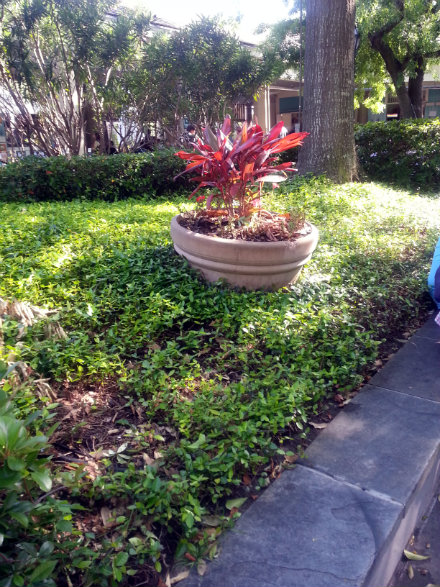AgriCulture bloggers Peter Davies and Mark Scherzer are the owners of Turkana Farms in Germantown, NY. This week Peter writes.

As much as I loved New Orleans when I lived there, it was, I am convinced (after living on Turkana Farms these past twelve years), one of the least agricultural places I have ever lived. It's true that you don’t expect big cities themselves to be agricultural, but you do see most of them in the context of a larger agricultural setting. New Orleans--with the Gulf on one side, the Mississippi on another, Lake Ponchartrain on yet another, and miles of bayous and swamps on what is the city's only tenuous connection to the mainland--is strangely isolated from any semblance of an agricultural hinterland. It is as detached from that kind of familiar world as Venice, for instance. Living in New Orleans, as I recall, was like living on some exotic Caribbean island that had somehow drifted close to the American mainland but never really quite connected to it. I am thinking about all of this because Mark and I are off to New Orleans tomorrow for our annual celebration of Mark’s birthday at the French Quarter Festival. A glorious event with jazz on every street, square, and levee, and Creole and Cajun food everywhere. We will soon find ourselves in a world as far from farming as one can get. In New Orleans, as sophisticated as it is, one feels closer to a hunter/gatherer kind of world, a world dependent more on oystermen, shrimpers, crabbers, and crawfishers than on the agricultural world of truck farmers, ranchers, orchardists, and dairymen.

When I first moved to New Orleans in the early seventies I expected, because of its garden-city-like character and warm climate, to be able to really indulge my passion for gardening. I had always had, no matter where I lived, a flower and vegetable garden if at all possible. With the big double lot I had purchased in what was really the Irish Channel (but dubbed by real estate developers as “The Fringe of the Garden District") it looked to me that I would have plenty of scope for my gardening pursuits. Like my 1844 “shotgun-camelback" house, the grounds had not seen much care for a good half century, but I was, of course, game to bring it all back. So it was not long before I strode energetically to the back of the lot with a spade to turn the ground for a small vegetable plot. I knew that there had been an old wooden shed on that spot but was confident that everything had been cleared away, except maybe for some very rotted wood embedded in the ground. I sank my spade into the bog-like soil. As I turned the soil, I shrieked, suddenly leaping back. And stopped breathing, as hundreds, maybe thousands, of cockroaches erupted out of the ground. I was momentarily traumatized. My appetite for gardening was considerably diminished. After that, cockroaches seemed to become omnipresent. I was awakened on one of my first nights by a rustling sound and looked down to see a very large cockroach dragging a Mars Bar candy wrapper across the floor. One night, sitting out on my front porch enjoying the intense, almost overpowering burst of night jasmine, I was simultaneously grossed out by realizing that the wrought iron fence railing was from one end to the other a moving procession of cockroaches out for the evening to eat the oils left on the railings by human hands.

I soon realized that the prevalence of insect pests, together with the incredible heat and humidity of June, July, and August, were not conducive to gardens, gardening or gardeners. At least not the kind of gardening world I was familiar with. And I gradually became aware that no one around me in the city had vegetable plots. And there were no colorful herbaceous borders, not even in the Garden District, of the sort I took for granted. Instead, a narrow range of hardy subtropical plants, shrubs, and trees seemed to satisfy the tastes of the people of New Orleans: caladiums, elephant ears, camellias, liriope, vinca, bay laurels, banana trees, fig trees, and live oaks. So I reluctantly learned to do without homegrown vegetables and seeing a passing procession of flowering perennials. One weekend afternoon I was on hands and knees transplanting caladiums into the border that ran along the front of the porch when I was confronted by Billie, one of the neighborhood kids. "Mistah Pete," he said, this being what the neighborhood had decided to call me. “Mistah Pete, why are you growing flowers?" “Well, why not, Billie," I replied. “Because men is s’posed to only grow things they eat," he replied. “But I eat flowers" I could not resist replying with a sly grin. He looked a bit nonplussed and wandered off. I suppose I should have explained to him how all the conditions in New Orleans seemed to conspire against a man growing things to eat, but I could not resist the joke. And so I probably became “Mistah Pete, that strange Northerner who eats flowers." Ultimately, I would have to wait for my return to the north to do what a men are expected to do--grow things they eat.









